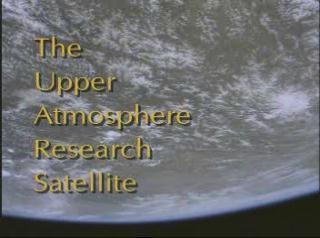Educational Videos
Visuals
Behold, A Whirlwind Came: The Science of Tracking Hurricanes
Go to this pageThis documentary-style video shows how NASA computer modeling research is contributing to an improved understanding and forecasts of hurricanes. It weaves interviews of three Goddard Space Flight Center scientists with scientific visualizations and live-action footage of hurricanes and the scientists studying them. The video focuses on application of the NASA finite-volume General Circulation Model (fvGCM) to the 2004 Atlantic Ocean hurricane season. Over the last 20 years, the National Oceanic and Atmospheric Administration's National Hurricane Center and National Weather Service have produced enormous improvements in hurricane forecasting. However, by running at ~25-kilometer resolution (twice that of current operational forecasts), the NASA fvGCM has shown in some cases an accuracy of landfall prediction on the order of 100 kilometers up to 5 days in advance. Initial evaluation suggests that the potential exists for dramatic improvements in warning time and intensity forecasts for tropical cyclones around the globe. NASA has begun collaborating with the National Weather Service and other agencies worldwide to improve forecasts so that, among other advantages, local authorities can narrow areas for evacuation. The video was produced for the TerraLink exhibit at the Maryland Science Center in Baltimore.Winner of the 2005 Video Competition Crystal Award of Excellence. ||
Remote Sensing: Observing the Earth
Go to this pageWith the help of global and local remote sensing we can have a much better understanding of global scale phenomenon. We can also quickly notice any changes to our environment. With this information we can make better informed decisions, and help us maintain nature's fragile balance. ||
UARS: The Upper Atmosphere Research Satellite
Go to this pageThis video summarizes science and data obtained by the Upper Atmosphere Research Satellite (UARS) mission. UARS was launched in 1991 to study ozone depletion and the processes that control the stratospheric ozone layer. Although the mission was intended to last only 18 months, UARS continued to operate 7.5 years after launch with 8 of the 10 instruments at the time this video was made. UARS has been one of the most successful NASA satellite programs. The spacecraft was developed and is managed by NASA's Goddard Space Flight Center. ||
Glacier Bay, Alaska, from the Ground, Air and Space
Go to this pageThis video contains a mix of live action video, stills, and computer animations of the Glacier Bay National Park in Glacier Bay, Alaska.Satellite mapping and imagery are used to show changes in the Glacier Bay area over a period of several years. Specific image processing techniques are discussed in relation to determining the evolution of glacier terminus points and in obtaining elevation data and how it is used to create fly-by visualizations of the area. ||
Cycles of the Atmosphere: Modules 1-3
Go to this pageThis series of narrated modules uses conceptual animations to explain some of the fundamental physical principles underlying weather and climate. ||




